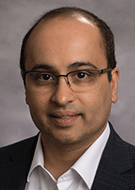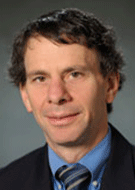Incorporating DEI Into Recruitment Efforts for Radiology Trainees
Revamped programs help improve recruitment and retention of underrepresented in medicine learners



This is the fourth and final story in a series of articles addressing equity health care issues in radiology. Read part one, part two and part three.
Radiology training programs around the country are investing significant effort and resources to attract and retain students from populations that are underrepresented in medicine (URiM) by incorporating diversity, equity and inclusion (DEI) principles into the interview process, curriculum and programming.
“We've had a real push in the department to have a training program and faculty body that mirror the very diverse population we serve in Atlanta,” said Amit Saindane, MD, MBA, chair, Department of Radiology and Imaging Sciences at Emory University School of Medicine in Atlanta.
Emory has involved diverse members of its faculty, residents and fellows in a holistic interview process. Efforts to make the interview process more holistic have paid off. Although the percentage of female applicants to Emory has remained steady at about 26%, the percentage interviewed is now 45%. The program’s first matched IR residency group was all women.
“We know that patients want to see doctors who look like them and have shared experiences,” Dr. Saindane said. “Aligning with and reflecting our community positively impacts patient care and outcomes.”
Evolving and Expanding Recruitment
DEI initiatives at New York University (NYU) School of Medicine have evolved over the past several years from a grassroots level to formalized, top-down, institutional initiatives, including an Office of Diversity Affairs, the Dean’s Recruitment Committee, and the Institute for Excellence in Health Equity.
“These three pillars are what the institution has created as a commitment to DEI and health equity,” said Nicole Hindman, MD, professor of radiology and surgery and vice chair of Diversity and Health Equity, Radiology at NYU.
To incorporate DEI into the curriculum, NYU taps the resources of the Association of American Medical Colleges and the Cultural Competency curriculum developed by the University of Michigan, which covers topics including implicit bias, gender-fair language, hiring and retention, and sustaining diversity.
In addition to departmental and institution-wide programming—as well as Grand Rounds on DEI topics—NYU has also instituted several mentoring programs for residents and medical students interested in radiology.
“I think this training makes better doctors,” Dr. Hindman said. “Today’s residents help our faculty learn not only because they’re closer to their training but also through the broad spectrum of life experiences they carry. That directly translates to patients.”
“We know that patients want to see doctors who look like them and have shared experiences. Aligning with and reflecting our community positively impacts patient care and outcomes.”
AMIT SAINDANE, MD, MBA
Intentionality Is Key
Penn Medicine’s radiology residency program took a hard look at its recruitment efforts a few years ago.
“You can identify that you’d like to add more trainees from groups that are underrepresented in medicine on top of your recruitment list, but if diverse candidates aren’t ranking you highly, you have to ask why,” said Mitchell Schnall, MD, PhD, chair of the Department of Radiology at Penn Medicine in Philadelphia.
The university’s evaluation led to new programming, including a residency track for trainees interested in health equity, diversity, and community and global engagement. Trainees work on a radiology-led health screening fair in a medically-underserved community, participate in outreach to local high schools, and have the opportunity to work at the hospital’s sister department in Botswana.
Penn also partnered with the Alliance of Minority Positions, which provides resources for URiM candidates to return for a ‘second look’ after their initial interview.
“The big thing about trying to have a diverse community within your residency is you have to be intentional about it,” Dr. Schnall said. “When underserved minority applicants look at our program, they want to feel comfortable and see people who look like them.”
Penn also added metrics related to DEI to the faculty’s incentive plan.
“This is a statement on the value the radiology department places on DEI,” Dr. Schnall said.
In total, the initiatives changed the culture of the residency program.
“We have become much more effective in matching underrepresented minority applicants over the past five years, and now we have a diverse program,” Dr. Schnall said. “It’s important because it’s not just underserved minorities you’re attracting, but also non-minority candidates who agree that diversity is important.”
Pipeline to A Diverse Faculty
Diversified residency programs offer a secondary benefit to the institution.
“We use the match as a way to bring that talent here to Philadelphia and then try to keep the best and brightest,” Dr. Schnall said.
Over the past decade, the percentage of women faculty in Emory’s Radiology Department grew from 28% to 35% and the percentage of URiM radiology faculty rose from 1% to 10%.
“Women now hold approximately 35% of all faculty positions,” Dr. Saindane said. “Furthermore, our greatest relative increases in women and URiM faculty have been at the associate professor and professor ranks.”
Penn is adding seven URiM faculty this year alone, nearly doubling the number of faculty in that category.
“It's all been an intentional process of trying to create comfort at the match level and then building to the point where we establish a reputation within the applicant pool and use that as a pipeline for faculty,” Dr. Schnall said.
Visionary leaders and the tireless efforts of faculty and staff dedicated to increasing diversity and inclusivity are creating positive change at all three institutions.
“It’s encouraging, especially for people working in the DEI space, which has a high level of burnout,” Dr. Hindman said. “We have a huge responsibility to the people we’re advocating for to continue the fight so that they have an ally looking out for them.”
For More Information
Explore RSNA's Health Equity Resources, including news, education, multimedia and research.
Read the RSNA News equity series and other previous stories on equity in radiology:
- Opportunities Abound for Health Care Institutions to Impact Systemic Health Equity
- Changes Needed to Make Health Care Screenings Equitable
- Radiology: Hear the Call to Action in Overcoming Health Care Disparities
- Radiology’s Role in Overcoming Health Care Disparities for Children
- Rural Areas Face Imaging Obstacles on the Road to Health Care Equity
- Navigating the Imaging Suite with Transgender Patients